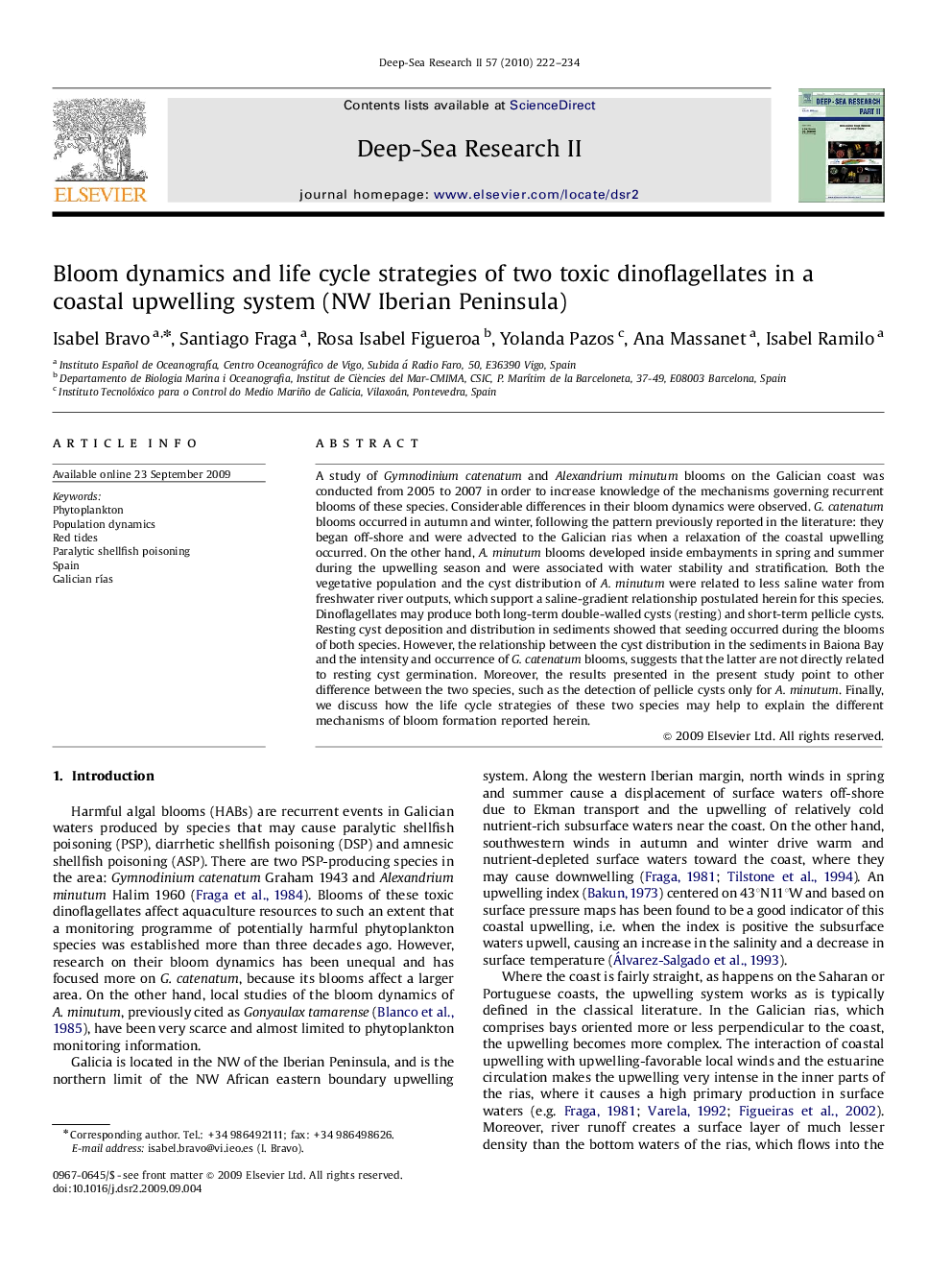| کد مقاله | کد نشریه | سال انتشار | مقاله انگلیسی | نسخه تمام متن |
|---|---|---|---|---|
| 4537353 | 1626479 | 2010 | 13 صفحه PDF | دانلود رایگان |

A study of Gymnodinium catenatum and Alexandrium minutum blooms on the Galician coast was conducted from 2005 to 2007 in order to increase knowledge of the mechanisms governing recurrent blooms of these species. Considerable differences in their bloom dynamics were observed. G. catenatum blooms occurred in autumn and winter, following the pattern previously reported in the literature: they began off-shore and were advected to the Galician rias when a relaxation of the coastal upwelling occurred. On the other hand, A. minutum blooms developed inside embayments in spring and summer during the upwelling season and were associated with water stability and stratification. Both the vegetative population and the cyst distribution of A. minutum were related to less saline water from freshwater river outputs, which support a saline-gradient relationship postulated herein for this species. Dinoflagellates may produce both long-term double-walled cysts (resting) and short-term pellicle cysts. Resting cyst deposition and distribution in sediments showed that seeding occurred during the blooms of both species. However, the relationship between the cyst distribution in the sediments in Baiona Bay and the intensity and occurrence of G. catenatum blooms, suggests that the latter are not directly related to resting cyst germination. Moreover, the results presented in the present study point to other difference between the two species, such as the detection of pellicle cysts only for A. minutum. Finally, we discuss how the life cycle strategies of these two species may help to explain the different mechanisms of bloom formation reported herein.
Journal: Deep Sea Research Part II: Topical Studies in Oceanography - Volume 57, Issues 3–4, February 2010, Pages 222–234